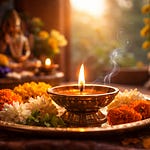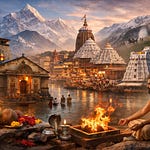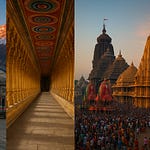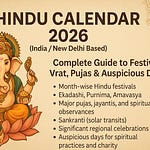Nestled in the serene hills of Uttarakhand, surrounded by dense forests and the gentle flow of the Kosi River, lies one of India's most spiritually vibrant destinations—Kainchi Dham Ashram. Known not only for its peaceful energy and divine aura but also for being the spiritual seat of the mystic saint Baba Neem Karoli Maharaj, this sacred place draws seekers, saints, celebrities, and global icons alike.
🕉️ Origin of Kainchi Dham
The name Kainchi literally translates to "scissors" in Hindi, symbolizing the two sharp hairpin bends on the road where the ashram is located. These curves resemble the shape of a scissor and gave the area its name: Kainchi. The term Dham refers to a sacred seat or abode of divinity.
The ashram was established in 1962 by Baba Neem Karoli Maharaj and his close devotee Poornanand. It was built around a natural cave where Baba often meditated, and the ashram was gradually expanded into a temple complex surrounded by tranquility and lush Himalayan beauty.
🙏 Who Was Baba Neem Karoli Maharaj?
Baba Neem Karoli Maharaj, also known as Neeb Karori Baba, was a spiritual master, a mystic saint, and is widely believed to be an incarnation of Lord Hanuman. His life is shrouded in mystery, humility, and miraculous stories of healing, divine intervention, and omniscient wisdom. Baba avoided fame and publicity, choosing instead a simple life filled with seva (selfless service), bhakti (devotion), and compassion.
✨ Teachings and Philosophy:
“Love everyone. Serve everyone. Feed everyone. Remember God.”
“Sab Ek – All is One.”
Taught through silence, presence, and miracles, rather than conventional sermons
Emphasized Hanuman Bhakti, service to the poor, and truthfulness
🌍 Global Impact
Despite being largely unknown in India until recent decades, Baba Neem Karoli Maharaj had an enormous impact on the Western spiritual movement.
🌟 Notable Devotees:
Steve Jobs: Traveled to Kainchi Dham in the 1970s seeking spiritual guidance
Mark Zuckerberg: Visited the ashram after being advised by Steve Jobs
Julia Roberts, Larry Brilliant (Google.org), and Ram Dass (author of Be Here Now)
These visits helped bring global attention to Kainchi Dham and Baba’s teachings
📜 History and Growth of the Temple
1961: Baba Neem Karoli visited the area and chose the spiritually charged location
1962: Foundation stone laid for the first Hanuman Temple at the site
Over the years, the ashram expanded to include:
Temples dedicated to Hanuman, Shiva, Durga, Lakshmi-Narayana
Samadhi Sthal (resting place) of Baba Neem Karoli Maharaj
Living quarters for saints and devotees
Meditation spaces and a large Bhandara Hall
Today, Kainchi Dham is among the most visited spiritual and pilgrimage destinations in Uttarakhand, especially on June 15, the day of Baba’s Mahasamadhi (final departure from physical form).
🛕 Religious Essence and Spiritual Importance
Kainchi Dham is much more than a temple complex. It is a spiritual energy field believed to radiate peace, clarity, and divine presence. People from all walks of life visit seeking mental peace, physical healing, life guidance, or divine blessings.
Spiritual Experiences Often Reported:
Intuition and inner clarity
Resolution of life problems
Healing from illnesses
Sudden positive life changes
Many visitors believe that Baba Neem Karoli still responds to prayers made at his Samadhi with grace and guidance.
🔱 Puja, Rituals, and Daily Worship
Daily Activities at the Ashram:
Morning and evening aarti in the main Hanuman temple
Chanting of Hanuman Chalisa, bhajans, and Ram Naam
Distribution of prasad to all devotees
Visitors often bring bananas, flowers, or chana prasad to offer at the temple
Aarti Timings:
Morning Aarti: Around 6:00 AM (depending on season)
Evening Aarti: Around 6:00 PM to 6:30 PM (before sunset)
During major occasions, a special havan, bhandara (free feast), and bhajan kirtan are organized for devotees.
🧘 Meditation & Silence
Devotees are encouraged to sit silently near Baba’s Samadhi or under the Peepal tree
Many engage in japa (chanting) or meditation
Mobile phones and cameras are discouraged inside the inner temple premises to maintain silence and sanctity
🎉 Major Festival: Baba’s Bhandara (June 15)
Each year on June 15th, the Mahasamadhi Bhandara is held, attracting over 100,000 devotees from across the world.
Bhandara Highlights:
Mass community feast (langar)
Collective bhajan chanting
Spiritual discourses
Devotees often report divine presence or visions during this time
🧳 Travel Guide to Kainchi Dham
📍 Location:
District: Nainital, Uttarakhand
Village: Kainchi, on Nainital-Almora Road
✈️ By Air:
Nearest Airport: Pantnagar Airport (~70 km)
🚆 By Train:
Nearest Railway Station: Kathgodam (~40 km)
Well connected to Delhi, Lucknow, and other major cities
🚗 By Road:
Drive or hire taxi from:
Nainital (17 km)
Haldwani (35 km)
Kathgodam (40 km)
🏨 Stay Options:
Ashram stay: Only with prior permission from the management
Nearby hotels, resorts, and homestays available in:
Bhowali
Nainital
Jeolikote
📅 Best Time to Visit
March to June:
Weather is pleasant and clear, making it the ideal season for darshan, meditation, and local treks. This is also when the ashram sees a good number of visitors without being overcrowded.
July to August:
This is the monsoon season, and the region experiences heavy rainfall and slippery roads. It’s not advisable to travel during this time due to the risk of landslides and roadblocks.
September to November:
The weather turns crisp and spiritually uplifting. The monsoon washes the landscape clean, and the atmosphere becomes serene. This is a peaceful time with fewer crowds, ideal for seekers.
December to February:
Winter sets in, bringing cold and misty mornings. There is a possibility of snowfall, especially in surrounding hills. If you're visiting during this period, make sure to carry warm clothes and prepare for chilly weather.
📚 Books & Resources
Be Here Now – Ram Dass (Global bestseller introducing Baba to the West)
Miracle of Love – A collection of real-life stories of Neem Karoli Baba’s grace
Love Everyone – First-hand stories from Western devotees
Kainchi Dham is not just a destination—it is a spiritual calling.
The energy of this place has drawn seekers across generations and geographies. Whether you go for answers, healing, devotion, or silence, something in this sacred valley always speaks to your soul.
Baba Neem Karoli Maharaj may have left his body, but his presence can still be felt—in the whispers of the wind, the glow of the diyas, and the hearts of those who visit.
“You can leave the world, but you can never leave Baba. He is in you.”










